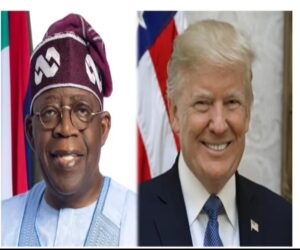“Who decarbonisation help?” is such a difficult question not to ask. Especially when as a citizen of what used to be referred to as the “Third World”, decarbonisation increasingly requires that large forests be kept in as pristine a state as possible, and that the rewilding of what once were large forest areas be reconsidered. Almost without fail, the decarbonisation dialogue is about places where indicators of economic efficiency all point in the wrong directions.
Population growth rates outpace domestic output growth rates. Government policies (a riot of subsidies, fiscal incontinence, monetary policy illiteracy, etc.) drive a plethora of perverse incentives that push up domestic costs, make exports uncompetitive, and imports attractive. Debts contracted to bridge the resulting fiscal canyons, cooperate with perennial balance of payments crises to keep large parts of the domestic populace poor. And these, in turn, foul up political stability in these places.
Enter the forests. A store of timber obviously. Beneath most of them, however, is a rich harvest of precious minerals – exportable as ores or pre-processed. And useful as inputs to a diverse range of industrial production. These benefits obtain immediately the chainsaws have had there way. And the tractors that come after? Mechanised agriculture could turn former forests into farmlands whose exports help mitigate balance of payments crises, and together with the industries that grow on their back boost employment, productivity, and economic growth. Were Goldilocks a citizen of a “Third World” country she most probably would not have wanted a better outcome.
Except that, as in the fairy tale, the house she wandered into in the woods is not hers. The importance of forests for humanity reaches further than those who would cut most of them down acknowledge. There effects on weather systems, including through the regulation of freshwater flows, affect agriculture outcomes in faraway locations. They take in huge amounts of carbon dioxide (implicated in the warming of the globe) and exhale oxygen (without which few species alive today on earth cannot thrive). The biodiversity that they support and how this is linked to our species widening, and increasingly harmful, footprint is further described in the metaphor that is the local trade in bushmeat.
While there is absolutely nothing wrong with our love for game, it presents us with a dilemma. Do we hunt these animals into extinction? Or do we indulge our tastes in a sustainable manner? Of course, the answers to these questions are, first, a No, and then a Yes! What, then, do we have to do, and how? By combining economic, environmental, and institutional strategies that internalise environmental value into national decision-making, we may yet balance the fair asset value of our forest endowments (necessary if we are to decarbonise the world faster than it is warming up) against the economic benefits of agro-industrial expansion (necessary if we have to drive development and growth fast enough to meet the needs of our rapidly growing population).
To do this, we must, first, recognise what is left of our forest cover as an economic asset. We could do these in two ways, at least. We are called upon to see forests beyond their current conception as undeveloped, potentially arable land. For they are above all a natural capital that besides their enormous potential for tourism, provides ecosystem services — such as carbon sequestration, soil fertility, water regulation, and biodiversity. Having accounted for our forests as national capital, we then must include them in the calculation of domestic output, or in the computation of the national balance sheet. If we are able to build a System of Environmental-Economic Accounting (SEEA) frameworks on this basis, then, hopefully, our policymakers, stakeholders in the agriculture and forestry spaces, and the general public may begin to see the real cost of deforestation in lost wealth, not just temporary GDP gains.
Second, we confront the chicken-and-egg problem headlong. Our poor exchequer is a major driver of the search for the economic prosperity that fuels deforestation. Yet, valuation and incentivisation arrangements are crucial for bedding down any advances that might be made in properly accounting for our forests. The possibilities are varied. Yet, from redirecting agricultural subsidies away from expansion into forested areas toward sustainable intensification and agroforestry, through paying farmers and/or their communities to preserve forests or maintain tree cover, to ensuring that agro-industrial products reflect their environmental externalities through mechanisms such as carbon pricing or deforestation-linked import restrictions will cost a packet.
As will efforts by governments to: designate clear land-use plans — identifying zones for intensive agriculture, conservation, and mixed-use buffer areas; increase yields on existing farmland using climate-smart agriculture, improved seed varieties, and efficient irrigation; and Integrate trees within farming systems (e.g., cocoa or coffee under shade canopies) to maintain ecological services while supporting rural incomes. Of course, the design of proper institutional and governance frameworks will matter just as much. Here, it is crucial that we secure local communities’ land tenure rights. This way, the balance tilts away from the exploitation of forests for near-term gain, in favour of sustainable management.
All of these initiatives (and more) will align domestic incentives towards sustainable consumption of scarce, not-readily replaced resources. But they also call for new ways of thinking about our natural resource endowments, and new sets of incentives. At the very minimum, the positive externalities from maintaining or increasing forest cover in developing countries ought to be financed by all who benefit.
Uddin Ifeanyi, journalist manqué and retired civil servant, can be reached @IfeanyiUddin.










